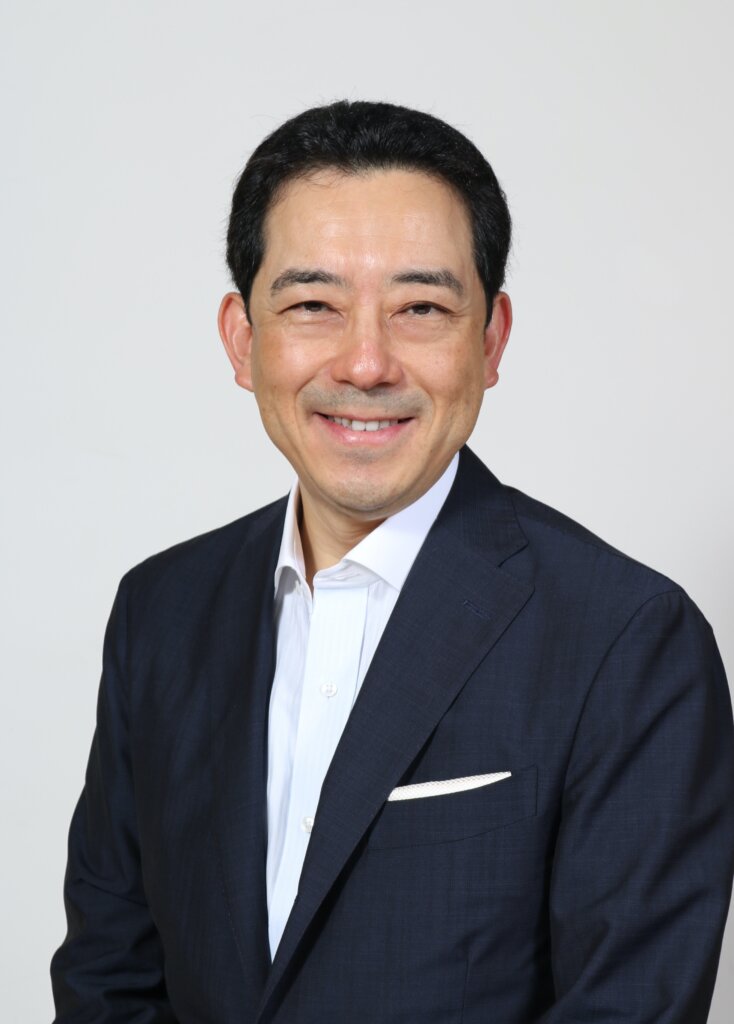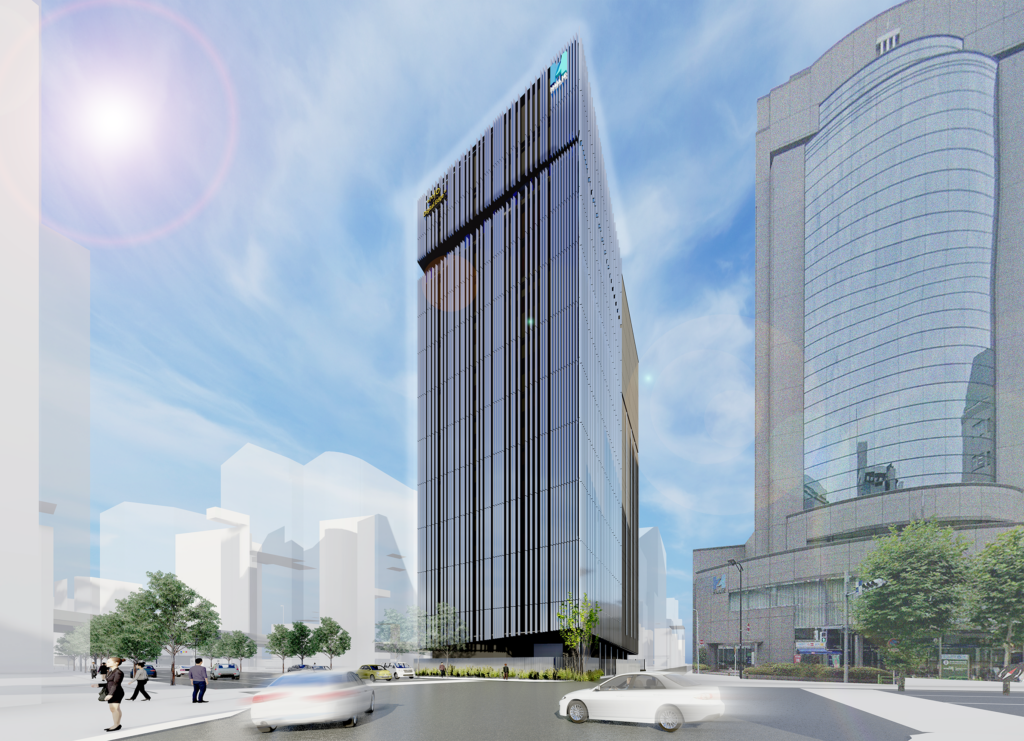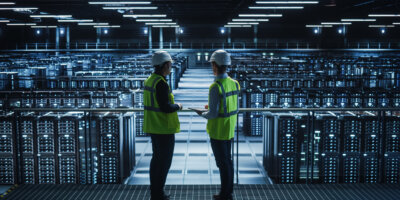
(Source – Shutterstock)
Here’s how Digital Edge is transforming the data center industry in Japan
When it comes to the data center industry in Japan, the country’s unique geographical position requires data centers to be built a lot stronger to withstand any natural disasters. Over the years, the country continues to witness more tech companies investing in data center infrastructure in Tokyo.
In fact, big tech companies like Google, Alibaba and Tencent continue to invest in the country. Google is expected to open its first data center in Japan this year while Alibaba Cloud has launched its third data center in the country as well to support the growing digital transformation demands from customers in the country.
Another company that continues to grow in Japan is Digital Edge. Digital Edge provides data center and fiber services across Asia, with a presence in Indonesia, India, Japan, Korea, and the Philippines. Founded in 2020, Digital Edge is growing fast and aims to bring new colocation and interconnect options to the Asian market, making infrastructure deployment in the region easy, efficient and economical.
Digital Edge’s recent data center in Tokyo marks the company’s ninth data center in Japan as it capitalizes on the region’s rapid digital transformation and high demand by cloud, network, and enterprise customers.
To understand more about Japan’s data center market and how Digital Edge’s expansion is essential for the country’s development, Tech Wire Asia speaks to Kei Furuta, President & Chief Revenue Officer at Digital Edge.
What are the current market opportunities in Japan’s data center market?
Japan is recognized as a leader in digital transformation and data-driven business and remains one of the world’s largest data center hubs. The pace of digitization has only accelerated since the global pandemic, spurred on by the increased uptake of digital services. For example, the Japan IoT and edge AI application markets are both expected to see double digital growth in the next 5-7 years, further fuelling demand for data centers (at a CAGR of 23.0% (2017-27) and CAGR of 20.0% (2021-30) respectively).
According to Statista, the Tokyo data center market is projected to reach US$18.18bn in revenue in 2023. However, despite growing demand, land for data center development in the network-dense, the downtown area of Tokyo is limited, making retail colocation space in this area highly sought-after. Our new TYO7 facility is designed to plug this unmet demand and further contribute to a thriving digital ecosystem.
Japan was the first market that Digital Edge entered when the company was established in 2020, and to date, we operate eight data centers in the market – six in the Tokyo metro and two in Osaka. Our new TYO7 project will be an interconnect-focused facility and is designed to complement our other data centers that cater to enterprise, hyperscale and high power density applications.

Kei Furuta, President & Chief Revenue Officer at Digital Edge.
How important are green and sustainable data centers in the region? Are customers preferring green data centers as it enables them to meet ESG goals?
Storing and processing data requires vast amounts of energy, with data centers consuming approximately 3 % of the global electricity supply. Against a backdrop of the global energy crisis and concerns around climate change, the sector is under increased scrutiny to be more sustainable. On top of this, we are seeing greater ESG requirements from our customers, particularly from the international cloud and content providers who want to work with suppliers that share common ESG goals.
Better management of our energy footprint is crucial to enable us to meet our carbon targets and achieve cost savings for our customers. In short, as a data center operator, investing in energy efficiency is a win-win. That’s why we have committed to ensuring all our newly constructed data centers are designed to achieve a peak Power Usage Effectiveness (PUE) of 1.3 or less, with a target annualized PUE of 1.2 or less. We’re also deploying innovative new technologies, such as Nortek’s Statepoint® Liquid cooling system, to achieve significant reductions in annual power and water consumption.
Japan in particular is at the forefront of promoting green and sustainable data centers in Asia, and has set a target to achieve energy savings of 40% or more in its domestic data centers by 2030. We have also set an ambition to be a carbon-neutral data center organization by 2030, including transitioning 50% of our electricity consumption to renewable or carbon-free sources by 2025. As demand continues to increase, it’s vital the industry works together across the supply chain to find new ways to achieve more sustainable digital ecosystems.
Can you share with us your expansion plan and market outlook for the data center in 2023 for the region?
Demand for digital infrastructure continues to grow exponentially. Analysis from Structure Research predicts the global colocation market is expected to be worth more than USD 100bn for the first time ever by 2026, with Asia accounting for half of this. Across the region demand for data centers is being driven by the overall decentralization of hyperscale cloud platforms, particularly in the emerging markets and second-tier cities. In the digital world, the most important element of the customer experience is low latency, so internet and cloud providers increasingly want to deploy their equipment closer to the end users.
To meet this growing demand, Digital Edge has grown rapidly since its launch in 2020 and today our platform spans 17 data centers across 6 markets. Our new 10MW NARRA1 data center in Manila opened for business just last month, and our 23MW EDGE2 site in Jakarta is expected to come online later this year. In addition to our new TYO7 project in Tokyo, we also recently announced a partnership with NIIF and AGP to develop a 300MW site in Navi Mumbai, India. We continue to look for new opportunities to expand our presence in the region and ensure we are in the places where our customers need us to be.

TYO7 designed by Nikken Sekkei Ltd.
What are the challenges that Digital Edge is facing and the driving forces for growing the business?
Our business was founded to help bridge the digital divide in the Asia Pacific and bring world-class digital infrastructure to all, including the underserved, emerging markets. However, we want to do so in a way that is responsible and sustainable. There are ongoing challenges to building greener digital infrastructure, particularly in those parts of Asia with hot and humid climates, and we continue to explore new technologies and innovative engineering designs to enhance the energy and water efficiency of our facilities.
We also recognize that Asia is a diverse region and every country has its own unique culture, environment, language, and regulations. It is extremely challenging to enter a new market without any local knowledge. That’s why we work to find the right local partners that can help us navigate new territories while ensuring consistency in the quality of services across our platform. For example for our new project in Tokyo, we have partnered with Hulic, a leading Japanese real estate developer, to combine their local property development knowledge with our data center design and build expertise.
Japan is also known for its natural disasters. How important is it to build data centers that are capable to cope with this? Would they require more power and maintenance compared to data centers in normal environments?
Ensuring the resiliency of the critical infrastructure we provide to our customers is paramount. This is why we have multiple redundancy and security mechanisms in place across our data centers. For example, our OSA1 facility in Oaska has been designed to meet the highest operational standards with flood and seismic-resistant design, including a seismic vibration oil control damper on each floor. We also use an ‘N+1’ UPS configuration, which essentially ensures an uninterrupted power supply in the event of a power failure to the grid. These measures may require more investment upfront but enable us to provide reassurance to our customers when it comes to our ability to maintain uptime and ensure availability.
Lastly, how is Digital Edge dealing with the talent shortage in the data center industry?
The skills shortage in the industry has long been hailed as its most prevailing and significant challenge. The Uptime Institute predicts staff requirements for data centers across the world will reach 2.3 million by 2025. In the three years since Digital Edge was founded, we have grown our workforce to 400+ employees. However, the talent competition in Asia remains fierce at all levels, particularly in Japan where there are broader demographic challenges, as well as in the emerging markets where the industry is still nascent.
In addition to ensuring our benefit packages and compensation are in line with or above our industry peers, to attract the talent we believe it’s vital to provide an open, transparent workplace that emphasizes results and flexibility. As a young organization, we have the unique ability to offer our people exposure to multiple specialties within or even across functions, and the opportunity to work directly alongside leading industry figures. Ultimately we want to attract those who are driven, thrive in a highly diverse environment, and have the right mindset to enable us to achieve our goals.
Finally, we believe it’s important to nurture future talent and have undertaken a number of initiatives to encourage the next generation to consider a career in digital infrastructure. This includes implementing a scholarship program in Indonesia for students studying in technology-related fields (via our Indonet and EDGE DC teams) and mentoring students as part of an entrepreneurship program in Singapore.
READ MORE
- Strategies for Democratizing GenAI
- The criticality of endpoint management in cybersecurity and operations
- Ethical AI: The renewed importance of safeguarding data and customer privacy in Generative AI applications
- How Japan balances AI-driven opportunities with cybersecurity needs
- Deploying SASE: Benchmarking your approach


